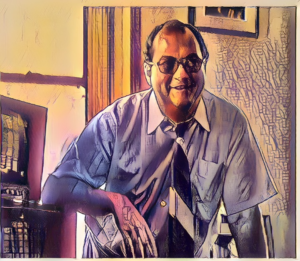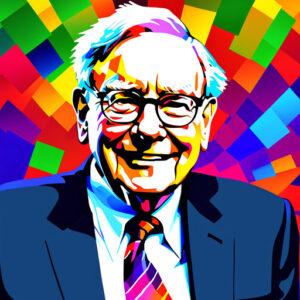STEVE EISMAN
(MARK BAUM)
Who is Steve Eisman ?
🧠 Early Life and Education (1962–1987)
- July 8, 1962: Steve Eisman is born in New York City into a Jewish family.
- 1984: Graduates magna cum laude with a Bachelor of Arts from the University of Pennsylvania.
- 1987: Earns a Juris Doctor degree from Harvard Law School.
💼 Transition to Finance (Late 1980s–1990s)
- Late 1980s: Begins his career as a corporate lawyer but soon realizes his dissatisfaction with the legal profession.
- Early 1990s: Joins Oppenheimer & Co. as an equity analyst, focusing on financial services. Due to anti-nepotism policies, his parents, who also worked at Oppenheimer, paid his first year’s salary.
- 1990s: Establishes a reputation for his analytical skills, earning recognition as an All-Star Analyst by both Institutional Investor and The Wall Street Journal.
📉 Rise to Prominence: The Big Short Era (2000–2011)
- 2004: Becomes a partner and senior portfolio manager at FrontPoint Partners, a hedge fund affiliated with Morgan Stanley.
- 2006: Identifies early signs of the subprime mortgage crisis, noting high levels of early delinquencies in securitized loans. Begins shorting subprime mortgage-backed securities.
- 2007–2008: Profits significantly from the collapse of the housing market, solidifying his reputation as a savvy investor. His actions during this period are chronicled in Michael Lewis’s book The Big Short and its subsequent film adaptation, where actor Steve Carell portrays a character based on Eisman.
- 2011: Leaves FrontPoint Partners amid investor withdrawals following an insider trading investigation involving another portfolio manager.
🚀 Entrepreneurial Ventures and Continued Influence (2012–2014)
- March 2012: Founds Emrys Partners with $23 million in seed capital.
- 2012–2013: Emrys Partners underperforms, returning 3.6% in 2012 and 10.8% in 2013, both below market averages.
- July 2014: Announces the closure of Emrys Partners, citing the diminishing viability of traditional fundamental analysis in the current investment landscape.
📊 Neuberger Berman and Public Commentary (2014–2024)
- September 2014: Joins Neuberger Berman as a managing director and portfolio manager for the Eisman Group within the firm’s Private Asset Management division.
- 2010s–2020s: Becomes an outspoken critic of for-profit colleges, likening their practices to those of the subprime mortgage industry.
- 2024: Placed on indefinite leave from Neuberger Berman following controversial social media comments regarding geopolitical events.
🧠 Investment Philosophy and Personal Interests
- Investment Approach: Known for his contrarian perspective, Eisman emphasizes the importance of fundamental analysis and is cautious about speculative investments. He has expressed skepticism toward cryptocurrencies, questioning their underlying value proposition.
- Personal Life: Married to Valerie Feigen since 1989; the couple has three children. Eisman is an avid reader, particularly of Roman history and fantasy novels, and owns a vast collection of digital comic books.
🎬 Cultural Impact: The Big Short
- 2015: The film adaptation of The Big Short is released, with Steve Carell portraying Mark Baum, a character based on Eisman. The movie brings widespread attention to Eisman’s role in predicting the financial crisis and critiques of Wall Street practices.
Steve Eisman’s journey from a disillusioned lawyer to a prominent figure in finance underscores his analytical acumen and willingness to challenge prevailing market sentiments. His story serves as a testament to the impact of critical thinking and contrarian perspectives in navigating complex financial landscapes.
Sources:
· https://en.wikipedia.org/wiki/Steve_Eisman
· https://www.allamericanspeakers.com/celebritytalentbios/Steve%2BEisman/445849
· https://www.chartwellspeakers.com/speaker/steve-eisman/
· https://www.nbprivatewealth.com/ja/who-we-are/steven-eisman
· https://www.nb.com/handlers/documents.ashx?id=93b25aad-f7d6-48b9-b9c9-6b01c79ebb45
· https://www.americanfarmlandowner.com/post/the-contrarian-steve-eisman
· https://www.litcharts.com/lit/the-big-short/characters/steve-eisman
· https://www.france24.com/en/20180902-steve-eisman-big-short-investor-who-bet-crash
· https://www.ft.com/content/13f918e9-c7a4-439e-aa96-ee3403e5c379
How Steve Eisman Made a Fortune From The 2008 Housing Market Collapse ?
Early Career and the Making of a Contrarian
Steve Eisman didn’t start out as a celebrity investor. He grew up in New York City, attended the University of Pennsylvania and Harvard Law, and initially worked as a lawyer. Unfulfilled by law, he switched to finance with a job as an equity analyst at Oppenheimer & Co., a firm where his parents were brokers. In the 1990s at Oppenheimer, Eisman covered subprime mortgage lenders – companies that made risky home loans to people with poor credit. He witnessed the first wave of subprime lenders go bust in the late ’90s, when nearly all of those companies collapsed by 1998.
This early crash left a deep impression on Eisman. As he later recounted, “You don’t forget when you cover a sub-sector, and it goes to nothing.” Experiencing this failure firsthand made Eisman skeptical of rosy forecasts and taught him how fragile risky mortgage businesses could be. By the early 2000s, Eisman wanted to manage money, not just analyze stocks. He left Oppenheimer in 2001 to join a hedge fund, and in 2004 he became a portfolio manager at FrontPoint Partners, a small hedge fund unit under Morgan Stanley.
At FrontPoint, Eisman was tasked with investing in financial companies – banks, lenders, real estate firms – basically any business tied to American finance. This was the perfect vantage point to observe the rapid growth of the housing market and the mortgage industry in the mid-2000s. Eisman’s prior experience with dubious subprime lenders made him wary as he saw a “second generation” of subprime companies (often run by the same people who led the failed ones in the ’90s) spring up during the housing boom. By 2005–2006, while most of Wall Street was enjoying the housing gravy train, Eisman’s contrarian instincts told him something was very wrong. He later said about the brewing housing frenzy: “I’d already seen this play. The only question was when would there be a tragedy?”
The Housing Bubble and Subprime Mortgage Crisis
When the housing bubble burst, millions of Americans faced foreclosure as home prices plummeted and mortgage defaults surged. In the early- to mid-2000s, U.S. home prices skyrocketed in what became a massive housing bubble. Easy credit and low interest rates meant millions of people with shaky credit (subprime borrowers) could suddenly get mortgages. Banks and mortgage lenders handed out home loans to borrowers with little income, no job, and no assets – the so-called “NINJA” loans. This surge in high-risk lending, combined with rising home prices, created a dangerous situation.
By 2006–2007, cracks were appearing in the housing market. Borrowers with adjustable-rate mortgages saw their monthly payments spike, and delinquencies began to rise. Home prices peaked and started to stall. Suddenly, those “can’t miss” loans began to go bad. Some examples were almost cartoonish in hindsight – like a farm worker earning $14,000 a year who was approved for a near-$720,000 mortgage. In another instance, Eisman’s own housekeeper had bought multiple investment properties with easy loans. These stories revealed the housing frenzy had become detached from reality.
Seeing the Cracks: Flaws in Mortgage-Backed Securities and CDOs
Eisman’s insight wasn’t just that housing prices could fall – it was understanding how fragile the financial products tied to those mortgages really were. Banks didn’t hold most of the mortgages themselves. Instead, they bundled thousands of home loans into mortgage-backed securities (MBS) – bonds backed by mortgage payments. These were then repackaged into even more complex financial products called Collateralized Debt Obligations (CDOs).
In theory, by pooling loans and slicing the risk, some parts of the CDO could be rated AAA – supposedly very safe. But in reality, CDOs often repackaged the worst mortgage debt, turning garbage into gold on paper. Eisman started digging into these securities and asking simple questions – like “What’s actually inside this bond?” Often, even Wall Street insiders didn’t understand.
Eisman realized the models assumed housing prices would never fall – a delusional oversight. When he asked one rating agency what would happen if prices dropped, the model couldn’t even accept a negative number. By mid-2006, he saw subprime loans were already going bad. The highly rated securities were built on sand. As one journalist put it, Eisman recognized these were extremely risky subprime mortgages, disguised as safe investments.
Betting Against the Bubble: How Eisman Shorted the Market
Identifying the problem was one thing – profiting from it was another. Eisman couldn’t short houses directly, and betting against subprime lender stocks wasn’t enough. The real risk was in the mortgage bonds and CDOs. The tool he used was the credit default swap (CDS) – essentially insurance on a bond. Eisman could buy CDS contracts that would pay off if a mortgage bond defaulted.
Think of buying a CDS as like buying fire insurance on a house you believe is burning down. You pay a premium; if the fire destroys the house, you collect a payout. Eisman didn’t need to own the house or bond – he was buying a side bet.
By late 2006, Eisman started buying CDS contracts on the most toxic mortgage bonds. His team combed through mortgage deals, targeting the worst loans – like no-income verification mortgages in bubble markets. By spring 2007, his fund held $600 million in CDS positions. They paid premiums monthly, betting the collapse was near. It wasn’t risk-free, but Eisman was convinced a crash was inevitable.
All-In at FrontPoint Partners: The Big Short Pays Off
Eisman’s hedge fund, FrontPoint Partners, managed about $700 million when he began the big short trade. Backed by Morgan Stanley, he had the freedom to take this aggressive position. Alongside trader Danny Moses and analyst Vincent Daniel, Eisman bet heavily on a housing collapse.
As 2007 unfolded, defaults rose, panic spread, and Eisman’s credit default swaps soared in value. By the time Lehman Brothers collapsed in 2008, his subprime wager had paid off massively. One report said his fund returned 81% in 2007 alone – a staggering gain during a year of financial carnage.
Eisman’s success catapulted him into the spotlight. By 2010, he was managing over $1 billion. His contrarian call was validated, and he joined the ranks of investors who saw the crisis coming and acted decisively.
From Wall Street to Hollywood: The Big Short
Eisman’s story gained wider fame through Michael Lewis’s 2010 book The Big Short, which profiled Eisman and others who bet against the housing market. In the 2015 film adaptation, actor Steve Carell played “Mark Baum,” a character based on Eisman. Carell’s portrayal captured Eisman’s sharp wit and moral outrage.
Scenes in the movie, such as Eisman grilling Wall Street presenters in Las Vegas, dramatized his real-life skepticism. The film used clever visuals to explain CDOs and mortgage bonds, highlighting how Eisman uncovered the market’s absurdity. Though he wasn’t deeply involved in the production, Eisman met with Carell to share personal insights, helping shape the performance.
By the film’s end, the character laments that banks got bailed out while ordinary people suffered – reflecting Eisman’s own views. Though he profited from the collapse, he remained critical of the system that enabled it.
Lessons for Investors from Eisman’s Big Short
1. Do Your Homework: Eisman read bond prospectuses, analyzed data, and asked tough questions. Deep research gave him confidence others lacked.
2. Challenge the Consensus: While most believed housing was safe, Eisman asked, “What if prices fall?” Independent thinking is often key to big investing breakthroughs.
3. Identify Incentives and Flawed Assumptions: Many stakeholders assumed prices could never fall. Recognizing these blind spots gave Eisman an edge.
4. Use the Right Tools: Eisman chose CDS contracts, which offered big upside. The lesson: express your investment view with the right vehicle.
5. Have Patience and Conviction: For months, Eisman paid premiums on his CDS bets while the market rose. Conviction based on sound analysis paid off.
6. Maintain Humility: Eisman’s story isn’t just about profit – it’s about ethics. He profited from a broken system but never forgot the human cost.
Final Thoughts
Steve Eisman’s triumph is more than just a tale of financial gain. It’s a masterclass in contrarian investing, critical thinking, and moral clarity. He didn’t just bet against the housing market – he exposed its flaws and made the world pay attention. For today’s investors, his story is a powerful reminder that seeing through the hype and asking the hard questions can lead not just to profits, but to legacy.


